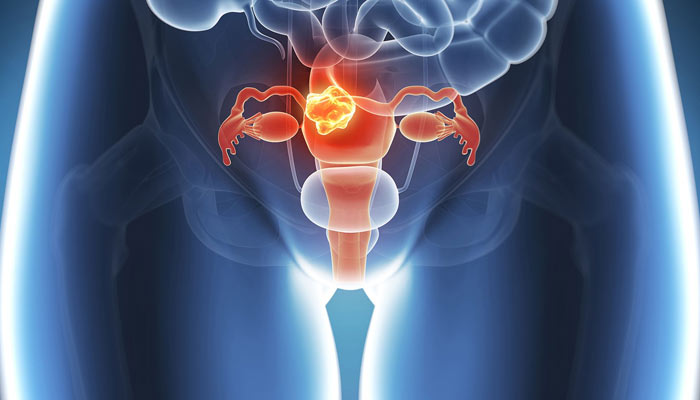Endometriosis is one of the most frequent gynaecological diseases, which involves the implant and growth of endometrial tissue outside of the uterus.
Endometriosis usually encompasses extremely painful and often heavy periods. The period blood is often dark in colour and can include dark clots. There is a general inflammatory response, due to mast cell activation. Anaemia can be present due to heavy periods, yet there can be iron overload localised in the pelvic cavity, which does not affect body iron content. There can be pain during sex, abnormal uterine bleeding and infertility. Pain may accompany nausea, fatigue, bloating and general malaise. There is progesterone resistance with endometriosis, and intracellular oestrogen – so oestrogen being produced in the tissue.
Ovulation can be painful as well with endometriosis, however with endometrioma, whereby the endometrial tissue is growing in the ovary, ovulation can be extremely painful and this pain can expend up to several days post ovulation.
Unfortunately there is a very high percentage of women who need repetitive surgery, after the initial laster surgery to remove the ectopic (outside of the uterus) endometrial lesions. Hormone therapy cannot always be used long term due to side affects, so it is imperative I feel that research into more natural, less invasive therapeutic solutions be sought.
Promising results have been found with a compound called NAC , this is N-acetylcysteine, the acetylated from of the amino acid cysteine, naturally present in garlic. In a clinical trial, which included a control with Italian women – “after 3 months within NAC treatment patients, cyst mean diameter was slightly reduced versus a significant increase in untreated patients. During NAC treatment, more cysts reduced and fewer cysts increased their size. Our result are better than those reported after hormonal treatments. Twenty-four NAC-treated patients-versus 1 within controls-cancelled scheduled laparoscopy due to cyst decrease/disappearance and/or relevant pain reduction (21 cases) or pregnancy (1 case). We can conclude that NAC actually represents a simple effective treatment for endometriosis, without side effects, and a suitable approach for women desiring a pregnancy.”
(Research Article: A Promise in the Treatment of Endometriosis, Maria Grazia Porpora)
The Chinese have also been using herbal medicine for years, this complex for pelvic congestion includes Cinnamon, Poria, Safflower, Tree Peony, Peony and Red Sage. This is a Traditional Chinese formulation that can induce cell death of endometriotic cells, and also inhibits cell proliferation and metastasis of endometriotic cells.
Depression and mood swings often accompanies endometriosis and counselling, as well as B group vitamins and St John’s Wort may assist. There is a correlation with women with endometriosis also experiencing long standing constipation and/or Irritable Bowel Syndrome. Restricted diets, low in coffee, alcohol, fructose and lactose can help reduce the inflammatory histamine response as well as supplementation of essential fatty acids. Herbs, such as Rosemary and St Mary’s Thistle and other dietary factors (e.g the cabbage family) assists in the improvement of liver function and clears excessive oestrogen levels – this is essential for the holistic treatment of endometriosis. Magnesium and herbal pain relieving herbs can also be utilised during acute episodes.


